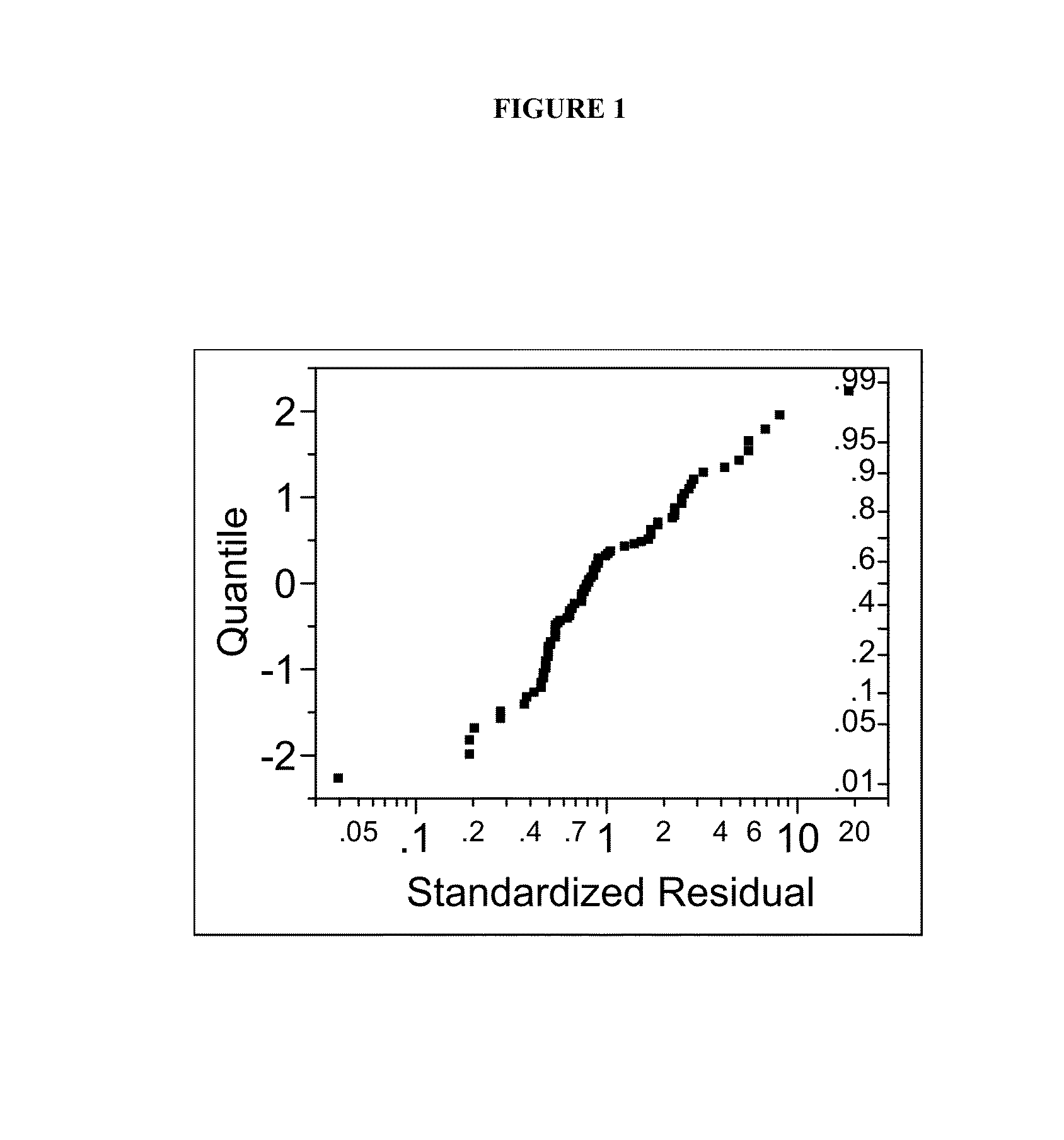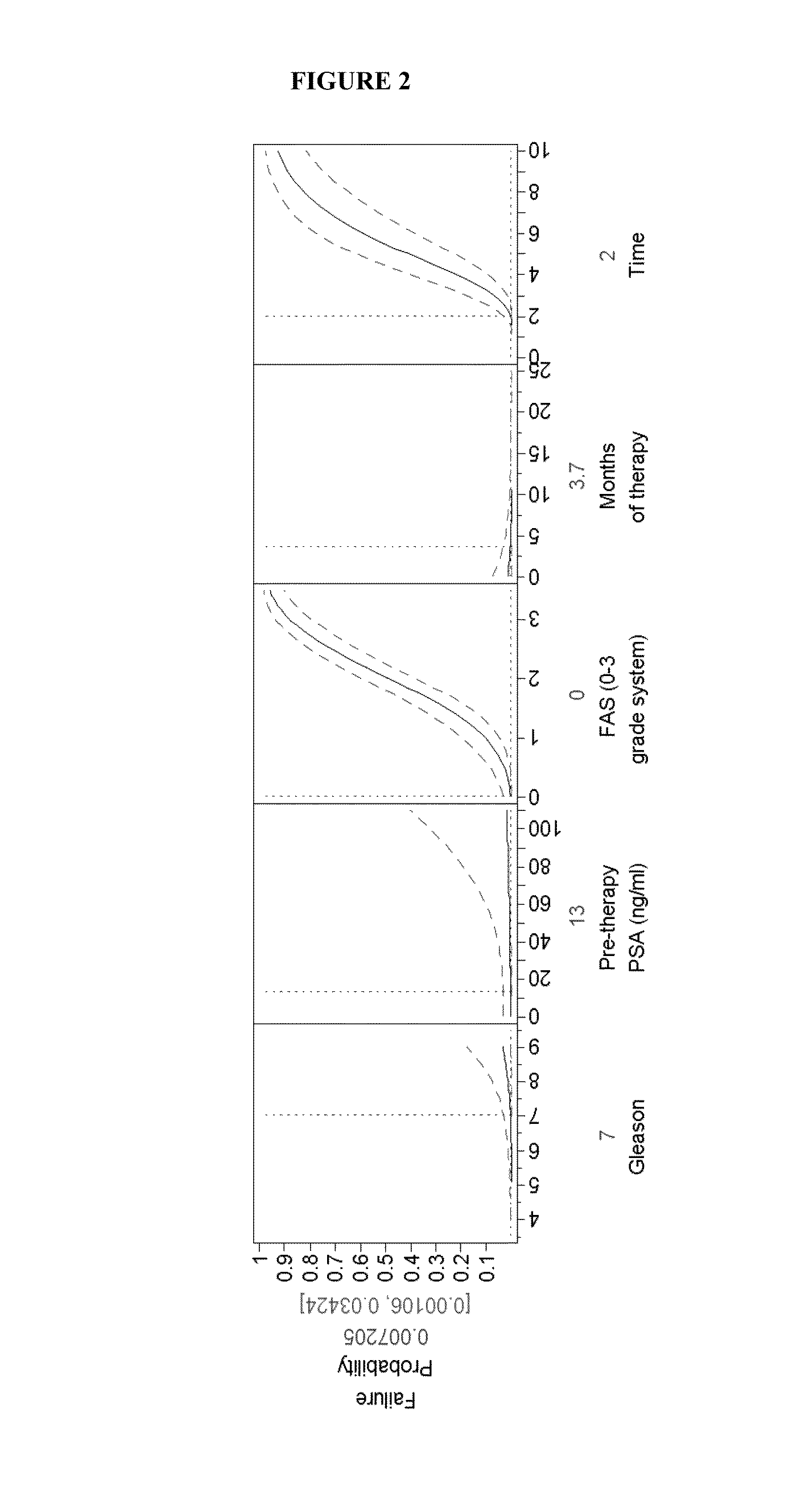Predictive biomarkers for prostate cancer
a prostate cancer and biomarker technology, applied in the field of prostate cancer prediction biomarkers, can solve the problems of poor prognosis, psa alone is not a reliable indicator of the presence of prostate cancer, and psa alone does not give doctors enough information to distinguish between benign prostate conditions and cancer
- Summary
- Abstract
- Description
- Claims
- Application Information
AI Technical Summary
Benefits of technology
Problems solved by technology
Method used
Image
Examples
example 1
Gene ExpressionProfile (GEP) Analysis
[0232]Gene expression profiles of post-surgical tumor collections were generated for 2351 patients in clinical study (NU9900), and 2911 patients in clinical study (NU9901) with prostate adenocarcinomas. Expression data from the two studies were normalized together by Robust Microarray Analysis (RMA). The adenocarcinoma measure used for all analyses was pathological (Cancer)(PS-pCA) in prostate tissue based on central review of biopsies within 12 months of the initial disease detection. Metrics associated with the two clinical study subsets are shown in Table 3.
TABLE 3Comparison of two clinical study subsetsStudy IdentifierStudy Identifier(NUC9901)(NUC9900)ProstateProstate AdenocarcinomaAdenocarcinomaGleason Grade 5-7Gleason Grade 5-7Gene / Protein / SerumYesYesbiomarker baseddeterminationPatient SettingInpatientInpatientNumber of Patients23512911Post-Surgical TumorYesYesCollectionNumber of patients with23512911PS-pCA total in ProstateGene array typeA...
example 2
Identification of Single Gene Markers
[0234]Gene Ontology (GO) analysis was used as described by Lee H K et al., 2005, “Tool for functional analysis of gene expression data sets,”BMC Bioinformatics, 6: 269; (See also: The Gene Ontology Consortium. “Gene ontology: tool for the unification of biology.”Nat. Genet. May 2000; 25(1):25-9 at http: / / www.geneontology.org) with 10,000 iterations of the Gene Score Re-sampling Algorithm. A gene network was built using the GeneGo program. Initial analyses used all detection of adenocarcinomas.
example 3
Multi-Probe-Set Predictive Models
[0235]To develop a predictive GPEP (gene-protein expression profile), 21,485 probe sets were filtered by removing (a) probe sets with low expression over all samples; and (b) probe sets with low variance over all samples. This yielded 12,385 probe sets for subsequent analyses. Normalized log2(intensity) values were centered by subtracting the study-specific mean for each probe set, and resealed by dividing by the pooled within-study standard deviation for each probe set.
[0236]A two-stage model-building approach was used to arrive at the best predictive model.
Single-Gene Markers
[0237]Single-probe-set analyses for dimension reduction were performed. This analysis involves an initial search for probe sets that showed a difference between the two studies in the relationship between expression level and response status, by either logistic regression or linear regression. This yielded 609 probe sets.
Multi-Gene Markers
[0238]A fit was examined with multi-pro...
PUM
| Property | Measurement | Unit |
|---|---|---|
| diameter | aaaaa | aaaaa |
| concentrations | aaaaa | aaaaa |
| concentrations | aaaaa | aaaaa |
Abstract
Description
Claims
Application Information
 Login to View More
Login to View More - R&D
- Intellectual Property
- Life Sciences
- Materials
- Tech Scout
- Unparalleled Data Quality
- Higher Quality Content
- 60% Fewer Hallucinations
Browse by: Latest US Patents, China's latest patents, Technical Efficacy Thesaurus, Application Domain, Technology Topic, Popular Technical Reports.
© 2025 PatSnap. All rights reserved.Legal|Privacy policy|Modern Slavery Act Transparency Statement|Sitemap|About US| Contact US: help@patsnap.com



